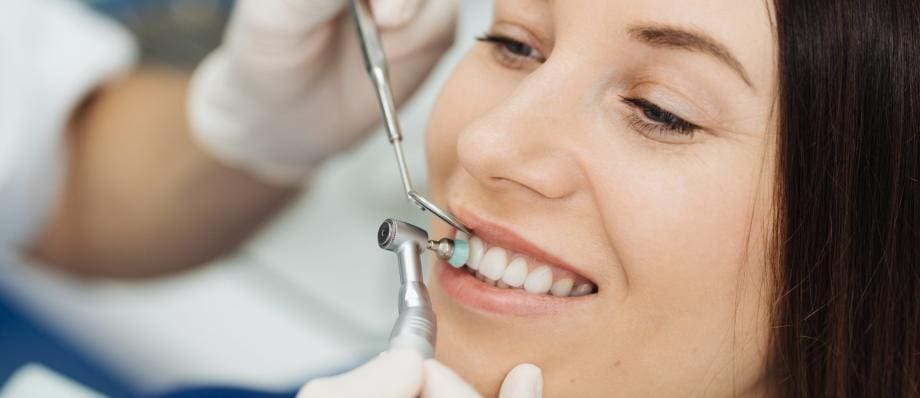Teeth cleaning is a dental procedure that involves removing plaque, tartar, and other debris from the teeth and gums. It is an important part of maintaining good oral health and preventing tooth decay and gum disease. In this article, we will explain the procedure of teeth scaling and its benefits.
What is Teeth Cleaning?
Teeth cleaning, also known as prophylaxis, is a dental procedure that involves the removal of plaque, tartar, and stains from the teeth. Plaque is a sticky film of bacteria that forms on teeth and can cause tooth decay and gum disease if not removed. Tartar, on the other hand, is hardened plaque that can only be removed by a dental professional using special tools. Teeth cleaning helps to prevent dental problems and keep your teeth and gums healthy.
Benefits of Teeth Cleaning
There are many benefits to getting your teeth cleaned regularly. Here are some of the most important:
- Prevents tooth decay
- Prevents gum disease
- Brightens your smile
- Saves money
- Fresher Breath
- Improves overall health
Prevents tooth decay
Plaque buildup can lead to tooth decay and cavities. By removing plaque and tartar from your teeth, you can prevent these problems from occurring.
Prevents gum disease
Gum disease is caused by an infection in the gums that can lead to tooth loss if left untreated. Teeth cleaning can help to prevent gum disease by removing bacteria from the gums and teeth.
Brightens your smile
Teeth cleaning can remove stains caused by coffee, tea, and other foods and drinks, giving you a brighter, whiter smile.
Saves money
Preventing dental problems through regular teeth cleaning can save you money in the long run by avoiding costly dental procedures.
Fresher Breath
Removing plaque and tartar from the teeth can help to eliminate bad breath.
Improves overall health
Poor oral hygiene has been linked to a range of health problems, including heart disease, diabetes, and respiratory infections. By maintaining good oral hygiene, you can improve your overall health and wellbeing.
How Often Should You Get Your Teeth Cleaned?
The frequency of teeth cleaning depends on a variety of factors, including your age, overall health, and oral hygiene habits. In general, most people should get their teeth cleaned every six months. However, if you have a history of gum disease or other dental problems, your dentist may recommend more frequent cleanings.
The Procedure of Teeth Cleaning
Teeth cleaning is a simple and painless procedure that usually takes about 30 to 60 minutes. The procedure involves the following steps:
- Examination
- Scaling
- Polishing
- Flossing
- Fluoride Treatment
Examination
Before the cleaning procedure, the dental hygienist or dentist will examine your teeth and gums to check for any signs of gum disease or other oral health issues.
Scaling
The dental hygienist or dentist will use a scaler to remove the plaque and tartar from your teeth. A scaler is a small metal tool that has a sharp tip. The scaler is used to scrape the plaque and tartar off the teeth and gum line. This process may cause some discomfort, but it should not be painful.
Polishing
After the scaling process, the dental hygienist or dentist will use a special paste and a high-speed handpiece to polish your teeth. The polishing paste contains fluoride, which helps to strengthen the teeth and prevent tooth decay.
Flossing
The dental hygienist or dentist will floss your teeth to remove any remaining debris between your teeth and to ensure that your gums are healthy.
Fluoride Treatment
The final step of the teeth cleaning procedure is a fluoride treatment. The dental hygienist or dentist will apply a fluoride gel or foam to your teeth to help strengthen them and prevent tooth decay.
Methods of Teeth Cleaning
There are two main methods of teeth cleaning: hand instruments and ultrasonic instruments. In this article, we will discuss the differences between these two methods.
- Hand Instrument Teeth Cleaning
- Ultrasonic Teeth Cleaning
Hand Instrument Teeth Cleaning
Hand instrument teeth cleaning, also known as manual scaling, is a traditional method of teeth cleaning that involves the use of small metal instruments to remove plaque and tartar from the teeth and gums. These instruments include a scaler and a curette. The scaler is used to remove large pieces of tartar, while the curette is used to remove smaller pieces of tartar and smooth the surfaces of the teeth.
The hand instrument teeth cleaning procedure begins with an examination of the teeth and gums to identify areas of plaque and tartar buildup. The dental hygienist or dentist then uses the scaler and curette to carefully remove the buildup from the teeth and gums. The procedure can take anywhere from 30 minutes to an hour, depending on the amount of buildup.
Ultrasonic Teeth Cleaning
Ultrasonic teeth cleaning is a modern method of teeth cleaning that uses high-frequency vibrations to remove plaque and tartar from the teeth and gums. The instrument used for this procedure is an ultrasonic scaler, which is a small hand-held device that uses high-frequency sound waves to break up and remove plaque and tartar.
The ultrasonic teeth cleaning procedure begins with an examination of the teeth and gums to identify areas of plaque and tartar buildup. The ultrasonic scaler is then used to remove the buildup from the teeth and gums. The procedure can take anywhere from 30 minutes to an hour, depending on the amount of buildup.
Differences Between Hand Instrument and Ultrasonic Teeth Cleaning
The main differences between hand instrument and ultrasonic teeth cleaning are:
- Technique
- Time
- Comfort
- Effectiveness
Technique
Hand instrument teeth cleaning requires a high degree of skill and precision, as the instruments are used to manually remove the buildup from the teeth and gums. Ultrasonic teeth cleaning, on the other hand, requires less skill and precision, as the ultrasonic scaler does most of the work.
Time
Hand instrument teeth cleaning can take longer than ultrasonic teeth cleaning, as the process is more manual and requires more time and effort to remove the buildup from the teeth and gums.
Comfort
Ultrasonic teeth cleaning is generally more comfortable for patients than hand instrument teeth cleaning, as the ultrasonic scaler is less invasive and causes less discomfort.
Effectiveness
Ultrasonic teeth cleaning is generally more effective than hand instrument teeth cleaning, as the high-frequency vibrations of the ultrasonic scaler can penetrate deeper into the gum line and remove more stubborn buildup.
Conclusion
Teeth cleaning is a simple and painless procedure that is essential for maintaining good oral health. The procedure involves the removal of plaque, tartar, and other debris from the teeth and gums. Teeth cleaning can prevent gum disease, tooth decay, bad breath, and other oral health problems. If you have not had your teeth cleaned in a while, it is important to schedule an appointment with a dental hygienist or dentist.
Hand instrument and ultrasonic teeth cleaning are two methods used to remove plaque and tartar from the teeth and gums. Both methods are effective, but ultrasonic teeth cleaning is generally more comfortable and more effective than hand instrument teeth cleaning. Your dentist or dental hygienist can help you decide which method is best for your oral health needs.





